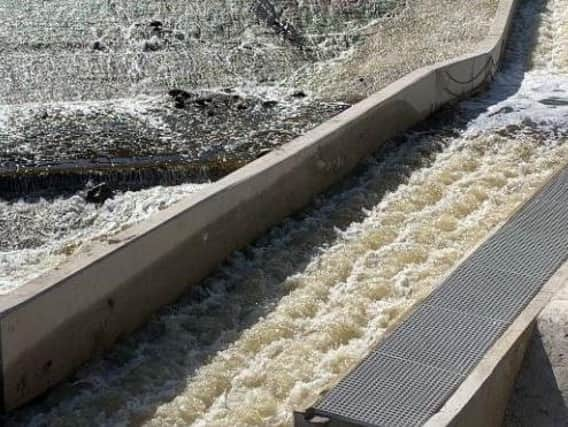New fish pass will allow salmon to reach Yorkshire spawning grounds for the first time in 200 years


Called 'the final piece of the jigsaw', the new fish pass at Masbrough Weir near Forge Island in Rotherham will give the salmon passage upstream as they migrate to spawning grounds in Sheffield.
Although salmon have been recorded in the lower reaches of the Don, near Doncaster, since the 1990s, there have always been physical barriers preventing them from travelling further.
Advertisement
Hide AdAdvertisement
Hide AdYorkshire Water have worked with partner agencies the Don Catchment Rivers Trust, the Environment Agency and the Canal and River Trust to remove these obstacles and open up the river.
The salmon have not had uninterrupted passage from the mouth of the Humber to Sheffield since the early 1800s, before sluice gates and weirs were built on the river as the towns it passed through began to industrialise.
It's thought the first 'available' spawning grounds the fish reach will be in the centre of Sheffield.
Environment Agency catchment co-ordinator for the Don, Anthony Downing said:
Advertisement
Hide AdAdvertisement
Hide Ad“It is very exciting that this month we will see the completion of the fish pass at Forge Island. With Sheffield City Council also finishing the fish pass on Sanderson’s Weir, this will open the entire migratory route from the North Sea to spawning grounds upstream of Sheffield.
“The work to open up the route has been a great partnership effort involving many organisations to enable fish passage at 18 previously unpassable weirs and hopefully we will now see a sustainable salmon population in the River Don after an absence of around 200 years. Not only will salmon benefit from the fish passes, but many can be used by other species increasing connectivity and benefiting other wildlife in the river corridor.”
The project began 20 years ago when salmon began to be caught in the Doncaster area as river pollution was reduced and water quality improved. The ultimate goal was for them to return to the Pennines to spawn. One of the first obstacles to be removed was Crimpsall sluice in Doncaster. Masbrough Weir is the 18th.
Contractors faced flooding, storms and the lockdown while racing to complete the works. Five weeks were lost to the weather during February.
Advertisement
Hide AdAdvertisement
Hide AdDon Catchment Rivers Trust project manager Rachel Walker added: “I can’t imagine a tougher set of circumstances for building a fish pass, but we’re there now, and we are very proud that the River Don is coming back to life. If there is one thing we have learnt during the lockdown, it’s that people need access to the natural environment for their wellbeing. Now, we’ve put the pieces in place for the people of Rotherham to enjoy their river. We look forward to celebrating this with you, and communities all along the Don, as soon as we can!”
Salmon migrate to the sea afer hatching but return to their spawning grounds when they are mature to breed. This migration usually occurs in autumn and involves them 'leaping' against the current.
A similar scheme is underway in the Yorkshire Dales, where several weirs will be removed along the River Aire between Leeds and Malham to allow salmon to return to the upper reaches for the first time in 150 years.